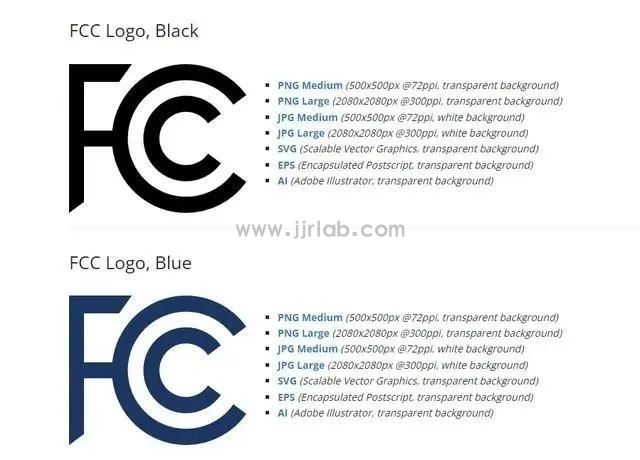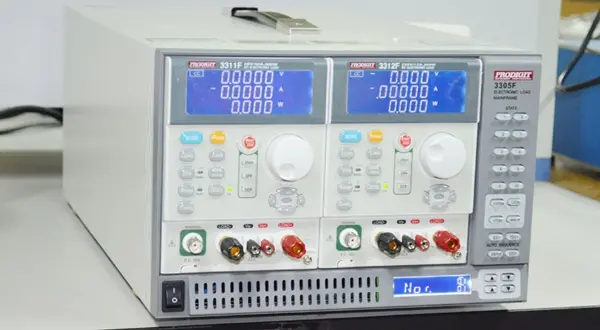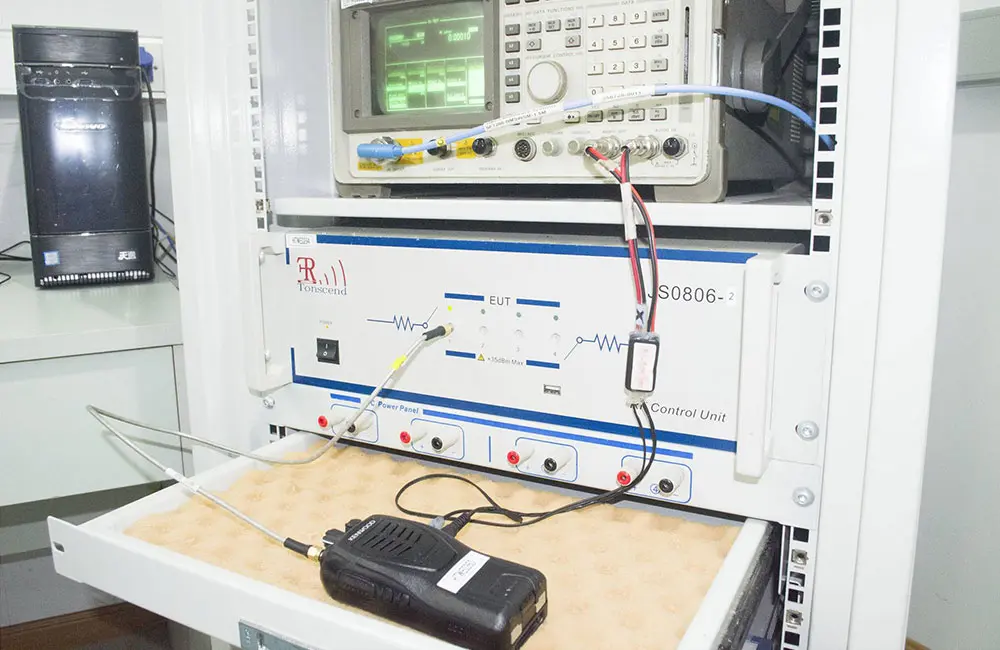
FCC ID Certification and SDoC Compliance
To successfULly enter the U.S. market with electronic products, FCC certification is an indispensable key requirement. Many enterprises often face two major challenges during the certification process: first, they have a superficial understanding of the scope of application of "fcc id" and "sdoc," leading to incorrect certification choices that waste significant time and costs; second, when products have complex functions, they are unsure whether both certifications are requiRED, delaying the golden window for product launch due to hesitation. Combining the latest policies and real-world cases, this article sorts out the full-process logic of FCC certification from aspects such as certification differences, composite scenarios, operational key points, and risk avoidance, helping you navigate the certification journey without confusion.

Core Differences Between FCC ID and SDoC
The key to selecting the correct certification type lies in whether the product has wireless signal transmission and reception functions — this is the "primary judgment standard" for FCC certification, directly determining the subsequent processes and costs.
Certification Type | Core Application Scenarios | Certification Nature | Key Requirements |
FCC ID | Products with wireless functions (WiFi, Bluetooth, 4G, RF remote control, etc.) | Mandatory third-party audit | Must pass radio frequency (RF) performance testing, obtain a unique fcc id number, and mark it on the product |
SDoC | Products without wireless functions (ordinary home appliances, power supplies, wired devices, etc.) | Self-declaration by the enterprise | Only need to pass Electromagnetic Compatibility (EMC) and electrical safety testing; no third-party audit required |
In simple terms: If there is wireless functionality, FCC ID is mandatory; if there is no wireless functionality, SDoC is optional. However, actual products are often more complex. For example, wired speakers with Bluetooth and smart home appliances supporting WiFi — such "wireless + wired" composite function products require both certifications.
Key Scenario Analysis: Which Products Require Both FCC ID and SDoC?
When a product's "wireless functions" and "wired functions" can operate independently, or when it contains multiple functional modules, certification must be conducted separately in accordance with the "module splitting principle" — the wireless part requires FCC ID, and the wired part requires SDoC.
Typical scenarios are as follows:
1. Independent Operation Products with Disablable Wireless Functions
Even if the wireless module is disabled, the basic functions of such products can still be used normally through wired or local methods, requiring separate certification for both parts.
· Case 1: Wired speakers with Bluetooth: After disabling Bluetooth, music can be played via the AUX interface (the wired part requires SDoC, and the Bluetooth module requires FCC ID);
· Case 2: Smart sweepers supporting WiFi: After disconnecting from the network, basic cleaning can still be achieved through the buttons on the body (the WiFi module requires FCC ID, and the body circuit and power supply require SDoC).
2. USB Interface Devices with Data Transmission Functions
If the USB interface is used not only for charging but also for file transfer, device configuration, and other functions, both wireless and wired testing must be covered.
· Case 1: Wireless printers: USB interface for file transfer (wired part: SDoC) + WiFi for wireless printing (wireless part: FCC ID);
· Case 2: Smart home hubs: USB interface for device parameter configuration (wired part: SDoC) + Bluetooth for remote control of home appliances (wireless part: FCC ID).
3. Combined Devices (Host + Peripherals)
When a host with wireless functions is paired with ordinary peripherals without wireless functions, the host and peripherals must be certified separately.
· Case 1: Wireless mouse + USB receiver: Mouse (wireless part: FCC ID), receiver (independent wired device: SDoC);
· Case 2: Drone + charging dock: Drone (wireless communication module: FCC ID), charging dock (ordinary power supply device: SDoC).
From Testing to Certification: Operational Differences and Timelines for Both Certifications
FCC ID and SDoC differ significantly in process complexity, required documents, and timelines, directly affecting product launch schedules. It is crucial to plan timelines in advance.
1. fcc id certification
As a mandatory certification, every step must comply with FCC regulations:
① Preparatory Stage: Apply for FRN (Federal Registration Number) and Grantee Code (Manufacturer Code), and designate a U.S.-based agent (laboratories can assist);
② Document Submission: Prepare authorization letters, non-disclosure agreements, product block diagrams (marking crystal oscillator frequencies), circuit diagrams, English user manuals (including FCC warning statements), and internal/external product photos;
③ Laboratory Testing: Complete RF performance testing (transmit power, frequency tolerance) and emc testing at an FCC-accredited laboratory;
④ Review and Certification: Submit test reports and payment receipts. Upon approval, obtain the Original Grant certificate. The typical timeline is 4-6 weeks.
2. SDoC Certification
No third-party audit is required, and enterprises can independently advance core processes:
① Confirm Applicability: Determine if the product falls within the SDoC coverage scope (no wireless functions);
② Testing and Evaluation: Conduct EMC testing and electrical safety testing independently or entrust a laboratory;
③ Submit Declaration: Submit test reports and SDoC self-declaration documents to the FCC;
④ Approval: The FCC completes certification upon verifying the materials. The typical timeline is 2-3 weeks, with costs significantly lower than FCC ID.
Recommendation: Engage with a compliance laboratory 3-6 months in advance to reserve time for testing and rectification, avoiding product clearance issues or platform removals due to invalid reports.
Certification Notes
1. FCC ID Certification: Details Determine Success
① Manual Warning Statements: Must include content such as "Unauthorized modifications may void the device's compliance";
② Cost Optimization: Multiple models in the same series can be bundled for certification, sharing test data to reduce costs by 20%-30%;
③ Information Confidentiality: Apply for technical detail confidentiality or delayed certificate activation to protect commercial privacy;
④ Design Changes: Replacing antennas, chips, or modifying RF parameters requires reapplication for certification.
2. SDoC Certification: Self-Declaration Does Not Mean "Randomness"
① Report Authenticity: Although self-declared, the FCC may conduct random inspections. False reports may result in severe fines (up to $1.5 million);
② Testing Focus: EMC testing is core — it is recommended to entrust professional institutions to avoid test failures;
③ Document Retention: Technical documents must be retained for 10 years for inspection; no SDoC marking is required on products;
④ Basic Materials: Prepare company business licenses, product manuals, and trademark registration certificates (if applicable).
FCC certification is not just a "process" but a "life-or-death line" for products entering the U.S. market. Selecting the correct certification type (first check for wireless functions), clarifying composite scenarios (split certification for wireless and wired parts), and adhering to the latest regulatory requirements (engaging with compliance laboratories in advance) can avoid repeated rectifications and delayed launches. If your products are targeting the U.S. market, it is advisable to collaborate with authorized laboratories (holding NVLAP/A2LA qualifications) to plan testing solutions during the R&D phase — this can save over 30% in costs and ensure compliant, efficient progress at every step.
Email:hello@jjrlab.com
Write your message here and send it to us
 FCC ID Certification and SDoC Compliance
FCC ID Certification and SDoC Compliance
 Export Certification and Compliance for Lighting F
Export Certification and Compliance for Lighting F
 FCC Certification Resumes Issuance
FCC Certification Resumes Issuance
 Electrical Toy Safety Certification EN 62115 EMC T
Electrical Toy Safety Certification EN 62115 EMC T
 What is the UL 62368 Test Standard?
What is the UL 62368 Test Standard?
 Is CISPR 32 the same as EN 55032?
Is CISPR 32 the same as EN 55032?
 What is the difference between EN55022 and 55032?
What is the difference between EN55022 and 55032?
 What is EN 55032?
What is EN 55032?
Leave us a message
24-hour online customer service at any time to respond, so that you worry!




